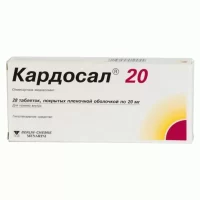$20.10
Manufacturer: Germany
Purpose: Diuretic action, treats edema in heart failure and renal disease.
Description
Trifas 20 (Torasemide) Solution for Injections 20 mg/4 ml. Vials №5
Ingredients:
Each vial contains 20 mg of Torasemide in a 4 ml solution for injections.
Dosage:
The usual adult dose is 10-20 mg once daily, administered by injection.
Indications:
Trifas 20 is indicated for the treatment of edema associated with congestive heart failure, renal disease, or hepatic disease.
Contraindications:
Do not use Trifas 20 if you are allergic to Torasemide or if you have anuria.
Directions:
Administer Trifas 20 by slow intravenous injection. Dosage may vary based on individual patient response.
Scientific Evidence:
Studies have shown that Torasemide, the active ingredient in Trifas 20, is effective in reducing edema and improving symptoms in patients with heart failure. Torasemide has been found to have a longer duration of action compared to other loop diuretics, making it a preferred choice in the management of fluid retention.
Additional Information:
It is important to monitor electrolyte levels and renal function regularly while using Trifas 20 to prevent any complications. This medication may cause dizziness or dehydration, so caution is advised when driving or operating machinery. Consult with a healthcare provider for personalized dosing and monitoring.
Trifas 20 has been well-tolerated in clinical trials, with common side effects including hypokalemia and hypotension. Patients should be educated on the signs of electrolyte imbalances and instructed to seek medical help if they experience any concerning symptoms.







Recent Reviews